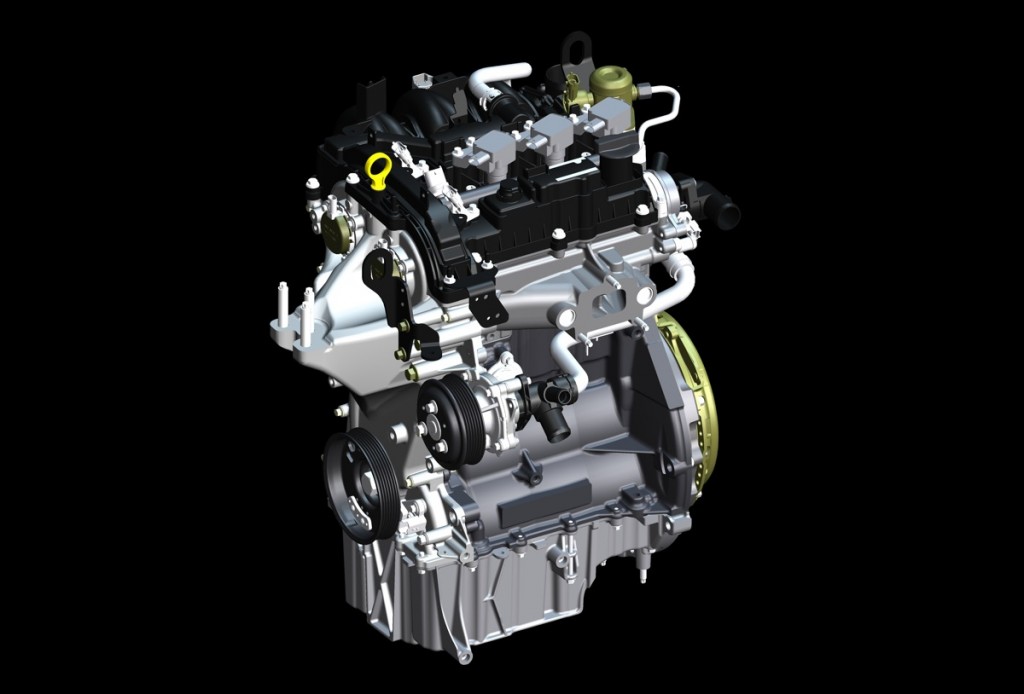For years, the V-engine has dominated the American auto industry.
Thanks to increasing gas prices and tougher gas-mileage and emissions targets however, the V-6 and V-8 engines once found in everything from family cars to pickup trucks are being slowly replaced by smaller, direct-injection, turbocharged 4-cylinder engines.
But how do these newer, smaller engines compare to a traditional V-6 engine?
Enter Ford, and its latest press release aimed to boost awareness of its EcoBoost engine range.
Normally, we have to admit we’d ignore a press release focusing just on engines. In this case however, Ford has produced a rather clever Infographic comparing its 3.5 liter V-6 engine to its 2.0 liter EcoBoost engine.
Less parts
Ford's 1.0-liter EcoBoost engine. Image: Ford Motor Company
The first thing you notice when looking at Ford’s infographic is the difference in part counts for each engine.
To keep things simple, Ford has only detailed the number of pistons, connecting rods, camshafts and valves in each engine, but it becomes obvious that the 4-cylinder engine is far less complex than the larger V-6 engine.
Less moving parts means less friction, equating to less waste, as well as simpler maintenance and servicing.
Less weight
The net effect of having less moving parts, fewer cylinders and a smaller physical engine block means the 2.0 liter EcoBoost is 60 pounds lighter than the 3.5-liter V6 it replaces.
That’s the same weight as an average 8-year old child.
The benefits
With less weight to carry around, cars fitted with the smaller 4-cylinder engine will naturally gain some improvement in fuel efficiency.
In addition, although Ford doesn’t detail it in the infographic, direct injection and turbocharging further increase fuel efficiency.

2013 Ford Focus 1.0 EcoBoost live photos
The net result is, Ford claims, an engine that is up to 20 percent more efficient with as much as 15 percent less carbon dioxide emissions.
Outselling hybrids, electric, CNG
Although not detailed in its recent infographic, Ford’s press release accompanying it was keen to point out that it has sold more than 180,000 Ecoboost-equipped cars and light-duty trucks since the engine debuted in 2009.
According to its own calculations, that means Ford’s EcoBoost engine technology has outsold combined figures of hybrid, electric and compressed natural gas cars in just a few years.
While we’re pleased to see Ford dramatically increasing the gas-mileage of its entire fleet by using EcoBoost technology, we can’t help but wonder one thing.
Will Ford’s successes with EcoBoost move it away from developing plug-in and hybrid cars in large numbers?
Let us know in the Comments below.
+++++++++++













